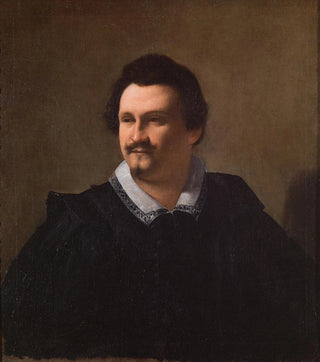Art print | Portrait of a bourgeois gentleman spy - Caravaggio


View from behind

Frame (optional)
In the fascinating world of art, some works stand out for their ability to capture not only the appearance but also the very essence of their subjects. The "Portrait of a bourgeois spy gentleman" by Caravaggio is one of those creations that transcend the simple frame to immerse the viewer in an atmosphere charged with mystery and tension. This painting, emblematic of the Baroque style, evokes a time when deception and loyalty intertwined in political intrigues. The piercing gaze of the character, accompanied by dramatic lighting, invites us to explore the secrets hidden behind his enigmatic smile. This art print allows appreciation of the psychological depth and technical mastery of the artist, offering a window into a bygone world.
Style and uniqueness of the work
Caravaggio, master of chiaroscuro, uses light not only to highlight the features of the gentleman but also to create an emotionally charged atmosphere. The composition of the painting is carefully orchestrated, with each element precisely placed to enhance the visual impact. The color palette, dominated by dark tones, emphasizes the contrast between shadow and light, thus reinforcing the dramatic nature of the work. This stylistic choice is not limited to a simple pictorial technique but becomes a means of expression that reveals the hidden facets of the subject's personality. The intense gaze of the gentleman seems to follow the viewer, creating an almost hypnotic interaction that encourages prolonged contemplation. This singularity makes this portrait a timeless work, capable of evoking deep and varied emotions.
The artist and his influence
Michelangelo Merisi da Caravaggio, known as Caravaggio, revolutionized painting at the end of the 16th century. Moving away from the conventions of his time, he introduced a striking realism, highlighting characters from the common people rather than idealized figures. His innovative approach not only influenced his contemporaries but also left an indelible mark on art history. The Baroque artists who followed, such as Rembrandt and Velázquez

Matte finish

View from behind

Frame (optional)
In the fascinating world of art, some works stand out for their ability to capture not only the appearance but also the very essence of their subjects. The "Portrait of a bourgeois spy gentleman" by Caravaggio is one of those creations that transcend the simple frame to immerse the viewer in an atmosphere charged with mystery and tension. This painting, emblematic of the Baroque style, evokes a time when deception and loyalty intertwined in political intrigues. The piercing gaze of the character, accompanied by dramatic lighting, invites us to explore the secrets hidden behind his enigmatic smile. This art print allows appreciation of the psychological depth and technical mastery of the artist, offering a window into a bygone world.
Style and uniqueness of the work
Caravaggio, master of chiaroscuro, uses light not only to highlight the features of the gentleman but also to create an emotionally charged atmosphere. The composition of the painting is carefully orchestrated, with each element precisely placed to enhance the visual impact. The color palette, dominated by dark tones, emphasizes the contrast between shadow and light, thus reinforcing the dramatic nature of the work. This stylistic choice is not limited to a simple pictorial technique but becomes a means of expression that reveals the hidden facets of the subject's personality. The intense gaze of the gentleman seems to follow the viewer, creating an almost hypnotic interaction that encourages prolonged contemplation. This singularity makes this portrait a timeless work, capable of evoking deep and varied emotions.
The artist and his influence
Michelangelo Merisi da Caravaggio, known as Caravaggio, revolutionized painting at the end of the 16th century. Moving away from the conventions of his time, he introduced a striking realism, highlighting characters from the common people rather than idealized figures. His innovative approach not only influenced his contemporaries but also left an indelible mark on art history. The Baroque artists who followed, such as Rembrandt and Velázquez






